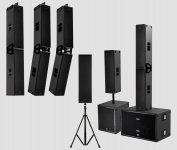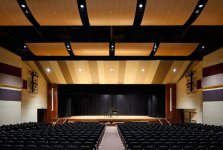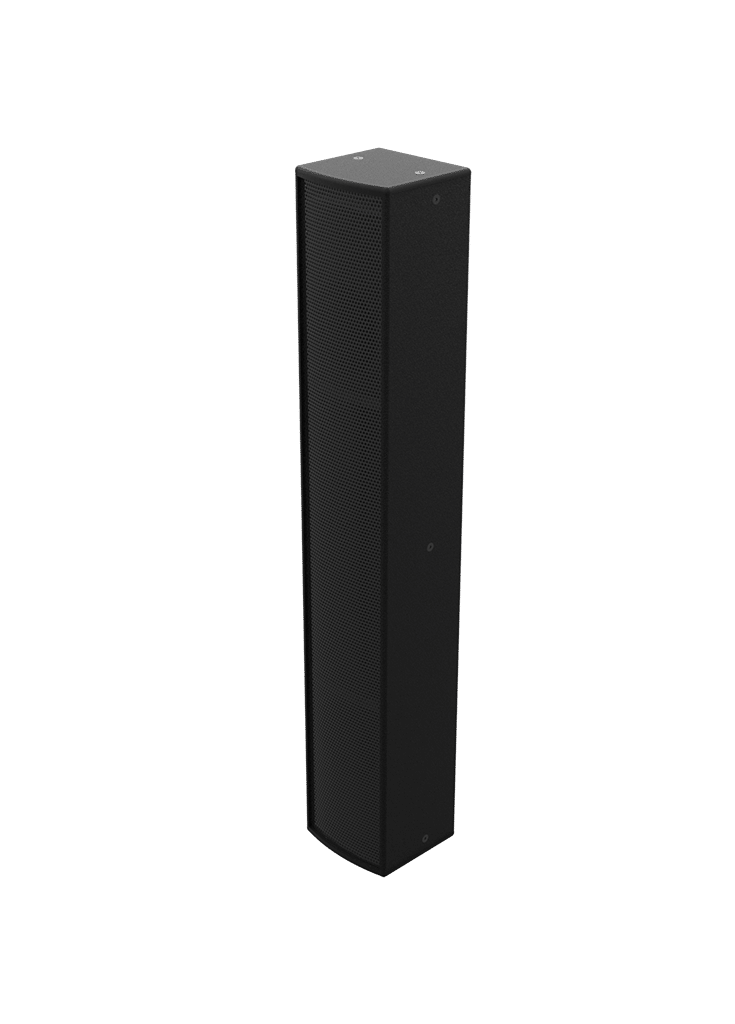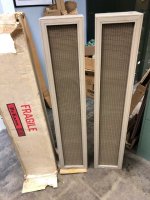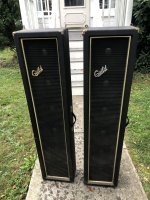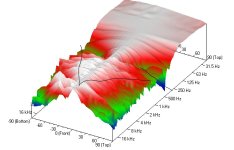The JBL CBT 70J is especially bad, I have seen (and heard) them in three places. Very, nay, extremely beamy on the highs. Straight out, on axis, like a laser. Move to the side a couple of degrees and the highs are gone. They ended up putting up more speakers on the sides to cover the back and the balcony.
The supposed purpose of the column is wider horizontal spread. However, to reach the back of the room, exactly the opposite is needed.
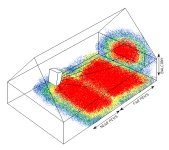
No off the shelf speaker will do this.
The wide angle is like trying to fill a milk bottle with the wide spray nozzle on the garden hose. Most of it misses the target.
The large auditorium with the 12 foot stick speakers is over 100 feet wide and deep, and over 1500 seats. The stick things (brand as yet unknown) sound good enough up close but, with the room full of noisy kids, they do not project to the back at all. • Don’t be misled by absurd claims that a column of small cone speakers has less loss per distance. The column will sound better than a single driver of the same type, but small speakers are inherently inefficient. One or a hundred. Sound loss per distance is not constant, but is relative to Q (directivity). The more directional (narrow), the less is the loss per distance. Hence the term, "long throw".
• It frustrates and angers me when I see so many churches and schools being sold these things, with grand promises, but like "The Emperor's New Clothes" little is delivered.
I hadn’t seen the dB brand. At least they are on the right track with the downward directed horn, and the 2-way, as opposed to the full range, like BOSE, or the dome tweeters of the CBT. Both terrible.
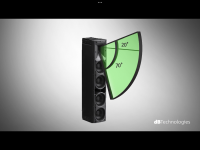
I fail to see the value in cramming it into a narrow box, and the horn is too small to be effective. Looks like an effort to fit into the fad of a skinny looking box. No acoustic reason for it. But at three grand each, they must be good. I’m sure I’ll never know. Nobody around here is crazy enough to spend that much on a speaker.
They don’t give a sensitivity rating, because they are powered, but small cone speakers are inherently inefficient, so even with a lot of power, the output is going to be low.
• We build custom enclosures designed for specific rooms. Churches and schools.
Seldom two alike.
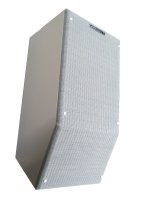
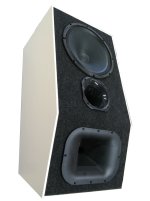
And for far less money than our competitors are charging for junk.
And far better sounding too.
*** Yes, I know this started with a guy that wasn’t interested in installed systems, but other people will see this too, and I have seen so much of of this junk lately that I just had to vent a little. And they were certainly installed just fine. It’s the crackpot design that’s at fault.

